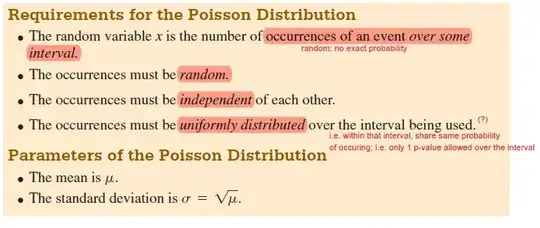Please refers to the below for requirements for poisson distribution.
I'm confused about the 2nd bullet point with the 4th. If an event is random, that means the event cannot be associated with a probability in any means. Then, how can it be possible to get the situation in 4th bullet point? i.e. how can random events give uniform distribution within a time period if themselves are probability-less?
Please explain with example. Better to provide proof as to why Poisson distribution requires the first 4 bullet points as requirements. Thank you!
